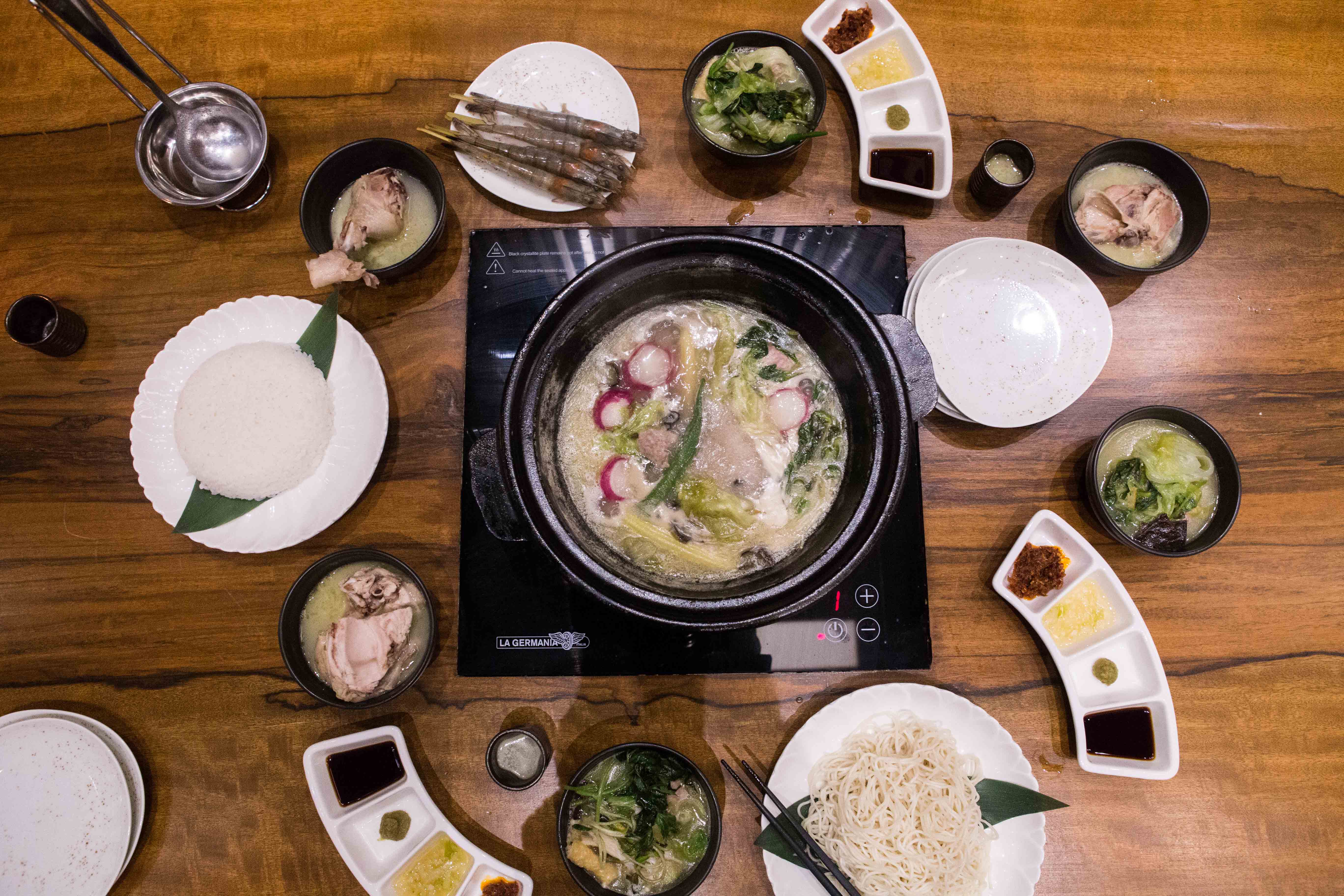Many of the beauty products and supplements on the market nowadays contain collagen, which is known for its beautifying, anti-aging properties. Bijin Nabe presents a more appetizing way to add collagen into your system: through a hotpot. You read that right, Bijin Nabe uses collagen stock as the soup.
The soup stock, called Jidori soup, is made of Jidori chicken bones, water, and salt. It is boiled and simmered for over eight hours, and eventually forms into a pudding-like consistency.

Collagen from premium quality chickens
Tsukada Nojo is one of the known poultry farms in Japan specializing in free range Jidori chicken. This premium meat—the equivalent of wagyu for beef and kurobuta for pork—comes from chickens that are raised for much longer (75 days) than the normal chickens (30 to 35 days). As a result, the Jidori’s meat is tougher.
The chickens were usually used at izakayas and disposing the chicken bones became one of the predicaments. They wanted to lessen waste so the idea to boil the bones to create soup stock was born. And with the added benefit that the stock contained collagen, which is good for the skin, the soup mixed with chicken meat and vegetables was then called the Bijin Nabe (literally translating to “beauty hotpot”).

Organic ingredients and five-star service
Japanese culinary philosophy dictates that a meal should be 50% taste and 50% aesthetic. Bijin Nabe follows this as well, as they make sure that all ingredients used are only of the best quality.
The ingredients are all organic, and meticulously chosen and inspected before being sent to the stores. The collagen are shipped from Japan to the Philippines.
Bijin Nabe’s staff will personally prepare the nabe for their guests. The “pudding” is heated on the table-top stoves to turn back into stock. Once the stock has boiled, guests will be able to try the soup, free from the influence of the flavors of vegetables and other ingredients.
The staff will then add the vegetables to the nabe, following a specific order: tori tsukune (chicken balls), lettuce, yellow zucchini, deep fried tofu, okra, fresh black fungus, baby corn, enoki mushrooms, sunflower sprouts, baby sweet potato leaves, red radish, and yuzu skin.
Not only does each item have to be of a good quality, it also has to be consistent with the rest: for example, the baby corn used in the nabe should all be the same sizes.
Once cooked, the nabe will be portioned and can be eaten. Bijin Nabe also prepares a set of spices to add flavor to the dish. Their basic spices set includes soy sauce, yuzu pepper, leek oil, and homemade chili oil.
Finish off the nabe the Japanese way with some zosui (rice porridge).
[one_half padding=”5px 5px 5px 5px”]
[/one_half][one_half_last padding=”5px 5px 5px 5px”]
[/one_half_last]
It’s filling, but not bloating
Bijin Nabe’s ingredients are all locally sourced, and delivered to the restaurant daily. Erika Lim, marketing manager of the Food Revolution Group of Restaurants, which handles Bijin Nabe in Manila, shares that some of their ingredients are exclusively bought from specific farms. “There’s only one supplier of sunflower sprouts in the Philippines—in Cebu, and we fly it in every day,” she says.
Because the products go from farm to table without the need for additional preservation or storage, each bowl of nabe is fresh.

